You’re already familiar with May Day and Beltane—but have you heard of Walpurgisnacht? On the eve of April 30 each year comes Walpurgis Night, a Germanic celebration of spring, fertility, and witches—as well as the Catholic Saint Walburga. Bonfires are lit, disguises are donned, and the night is passed dancing, drinking, singing, and telling tales of crones and hags as the month of May begins.
Many Walpurgis Night customs overlap with the modern witch’s Beltane, a holiday distinctly inspired by the Irish Lá Bealtaine and Scottish Latha Bealltainn, which take place on the first of May. With Bealtaine translating to “bright fire,” this was one of four Celtic cross-quarter days, or fire festivals. Bealtaine marked the beginning of summer in Irish mythology. Great fires were lit, rituals for plentiful harvest performed, and cattle moved out to their summer grazing pastures, often driven between two fires for good luck.
While we don’t know the full extent of cultural exchange between the Celts and Germanic pagans across an ancient Europe, it seems likely that these seasonal traditions could share similar roots. We’ve already explored Beltane at length; now, let’s dive into the legends surrounding its Germanic cousin.
Observed throughout northern Europe and Scandinavia, Walpurgisnacht is a mottled decoction of folklore, history, and magic. Why the witches—and what’s Saint Walburga got to do with this, anyway? In this article, we’ll investigate Walpurgis Night’s pagan roots, its association with the Catholic saint, the witches who’ve shaped the modern holiday, and how folks celebrate today.
Header image by Andreas Fink (andreas-fink@gmx.de) at de.wikipedia - Own work, CC BY-SA 2.0 de.
The Origins of Walpurgisnacht
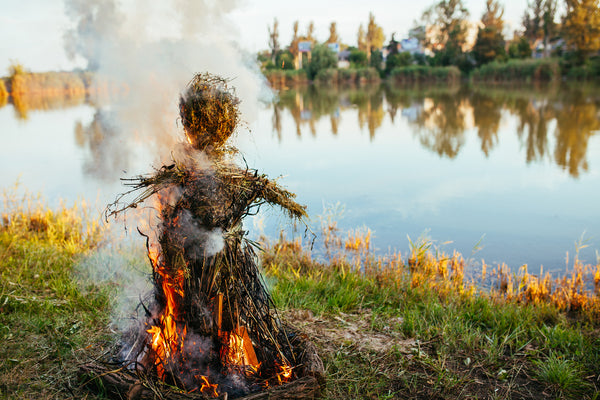
Pre-Christian farmers who lived by the whims of the weather had every reason to recognize and ritualize the turning of the seasons. As the prime time for planting season, fertility of animals and the Earth became particular focal points around halfway between the vernal equinox (now Ostara) and the summer solstice (now Litha), a theme that likely extended to marriages and relationships as well.
The point of this transition period was to drive the winter out, and such a task may have required a figurehead to lead the way. Some have suggested that pre-Christian Germanic pagans worshiped a goddess called Waldborg during this time (though some know her as Walburg or Waelburga today). Like Eostre or Ostara, Waldborg seems to have been a deified embodiment of spring, summer, and the fertility of the Earth. However, a lack of scholarly evidence of this particular deity makes it rather challenging to learn anything more about her.
One practitioner writes that, in their personal practice today, these two goddesses often appear as one and the same. “Eostre-tide and Walpurgistide both celebrate the power of returning life, both its dark, mysterious, blood-deep side, and its bright, shining, blossoming side. They cannot be separated.”
A plentiful harvest requires more than good soil and hardy livestock: It needs favorable weather, too. In addition to practicing fertility rites, this pagan folk holiday likely included protective rituals to ward against drought, sickness, famine, and other supposed tricks of evil spirits. German witch Bex of “The witches’ cookery” shares that “back in the day, people believed that fire and smoke had a cleansing type of energy or power to it to cast away evil,” which explains the tie-in to the bright bonfires of Beltane as a talisman for strength, vitality, safety, and good luck.
While later beliefs in the area attributed these potential evils and maladies to the spellcraft of witches, it’s unclear whether Germanic pagans of the Frankish Empire believed in such beings in their time. However, the arrival of a certain English nun in the 700s was soon to change everything.
Who Was Saint Walburga?
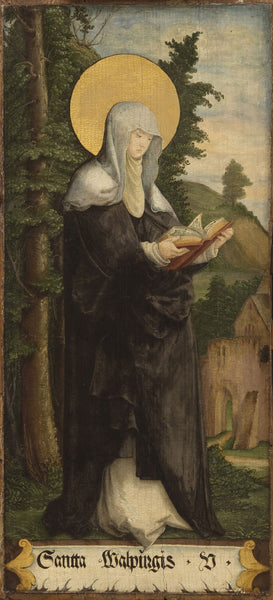
Saint Walburga (also known as Waldburg, Walpurgis, Vaubourg, or Gauburge) was an English nun who lived in the 8th century CE. When summoned by her brother, Winebald, in 748, Walburga left her post as a Benedictine in Dorsetshire to govern the nuns at Winebald’s double monastery in Heidenheim, Germany (then Alemannia), a unique monastery in the area at the time that housed both nuns and monks alike. When Winebald passed in 761, Walburga rose to become abbess of the entire monastery.
One of Walburga’s primary roles in Germany was leading the conversion of local pagans to Christianity—which comes as no surprise considering that Heidenheim literally translates to “Heathen Home.” As an evangelical missionary, Walburga was celebrated for her healing skills, curing illnesses, warding off pests, and, notably, banishing pagan sorcery. She may have even been a popular consultant on undoing and preventing presumed witches’ attacks and spells.
Walburga passed around 779. After she was interred in Heidenheim, a mysterious liquid is said to have flowed from her tomb, which soon became widely hailed for possessing miraculous healing powers. About a century later, Walburga’s remains and relics were dug up and moved for re-interment in Eichstätt, Bavaria, where her brother Willibald had served as bishop. The date was May 1, 870. Many note this as the day Walburga was canonized as a saint.
St. Walburga’s oil is still said to flow from her tomb and collect upon her relics each year between October 12 and February 25, the date of her death. Her feast day is observed on February 25, but she lives on, too, in the celebrations of Walpurgis Night, as folks gather to remember her canonization and the posthumous miracles she continues to bestow.
Is it purely coincidence that this date happens to overlap an age-old pagan festival? Maybe so. Yet, it may have also been an intentional measure on behalf of the Church to further the Christianization process peacefully. It was certainly easier to get folks on board with a new religion if they were still able to observe their familiar holidays, which made it all too simple to slip pagan customs into these new celebrations. Ancient traditions endured. St. Walburga became conflated with the Germanic goddess Waldborg (as well as the witchy Frau Holle), and time went on brewing the Walpurgis Night we know today.
The only noteworthy change in the narrative concerned witches. Now established as harbingers of evil, any protective or warding rituals performed during this time were aimed at weakening the witches’ magic and expelling them from the community.
Really, these beliefs just added fuel to the bonfires when it came to the matter of a witch’s power on Walpurgisnacht.
Walpurgisnacht: The Night of Witches
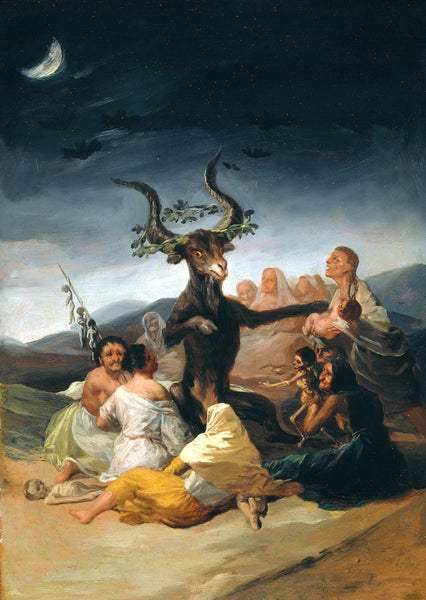
Francisco Goya, The Witches' Sabbath (1798)
Embedded in the Harz Mountains in Germany is a peak known as Brocken, the tallest in its chain. On the eve of April 30 each year, as it has since the medieval era, Mount Brocken is said to host a gathering of witches for an animalistically wild night of magical rituals and, reportedly, cavorting with the devil. Such a time is known as the Witches’ Sabbath.
At this time of year, a witch’s power is said to be unusually strong (which may have something to do with the thinning of the veil or mist between our world and that of spirits). Folklore is robust with tall tales of their dark magic. Encyclopedia Britannica even writes that “witches reputedly traveled to the sabbath by smearing themselves with special ointment that enabled them to fly through the air, or they rode on a goat, ram, or dog supplied by the devil.”
While people probably weren’t riding broomsticks up to the mountain and going to worship the devil or perform malefic rituals, these gatherings did occur and continued well after the Christianization of Europe without drawing many eyes. Unfortunately, a hysteria surrounding witchcraft ruptured among Christians after the publication of Malleus Maleficarum (the “Hammer of Witches”) in the late 15th century, and vicious witch hunts began.
Such outlandish stories of sinful, demon-hailing witches inevitably attracted the attention of religious prosecutors, with attendance of witches’ gatherings continually cited as evidence of evil sorcery. Germany was particularly brutal in its persecution of witchcraft, having put nearly 7,000 people to death between 1300 and 1850—though some estimate a far higher count of around 50,000.
Demonizing witchcraft has been a typical tool for dehumanizing women and pagan or folk traditions, and we see this reflected in the arts of the day. Walpurgis Night gatherings on Mount Brocken (also called Blocksberg) show up in a fair amount of European literature, appearing in famous German works such as Goethe’s Faust (1833) and Jacob Grimm’s Teutonic Mythology (1835).
In one of two Walpurgisnacht scenes, Goethe’s characters Faust and Mephisto interact with a chorus of witches who chant:
To Brocken’s tip the witches stream
The stubble’s yellow, the seed is green.
…
So they go, over stone and sticks,
The stinking goat, the farting witch.
Grimm writes of “a mountain very high and bare…whereon it is given out that witches hold their dances on Walpurgis night, even as on Mt. Brocken in the Harz.” Shortly after sharing that “witches eat horseflesh,” he continues: “The Witches’ Excursion takes place on the first night in May…They ride up Blocksberg on the first of May, and in 12 days must dance the snow away; then Spring begins.”
All of these associations between witches and Walpurgis Night have given it the nickname Hexennacht, or the Night of Witches. For some, this means burning effigies of witches in a bonfire on Walpurgis Night, in-keeping with the old warding rituals. For others, this means commemorating those whose lives were lost to the witch trials. Thousands of witches and non-witches alike still gather to celebrate the holiday on Mount Brocken.
All over Germany, though, the Night of Witches means just one thing: Halloween.
How to Celebrate Walpurgis Night Today
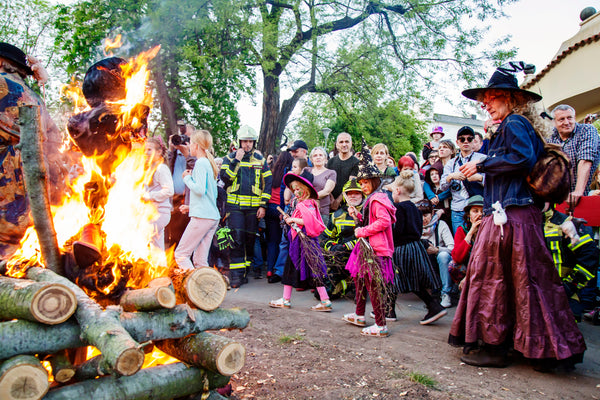
What began as an agrarian celebration of spring has now become Germany’s “Halloween in April.” Walpurgisnacht today is a customarily boisterous night for dressing up as witches, devils, or demons; singing, shouting, stomping, and making a great deal of loud noise (probably to scare off evil spirits); and playing pranks on neighbors or friends. It’s hard to tell whether folks mean to ward against the trickery of witches, or to become the trickster spirits themselves!
Of course, the bonfires and the dancing remain staples of Walpurgisnacht traditions wherever it is celebrated. In Germany, the night is also called Tanz in den Mai, or Dancing into May, with dance events held locally to ring in the season. Just like Beltane, this is a night for dancing and jumping around the fire to fortify your spirit for the coming months. (If you need a good playlist for the occasion, we’ve compiled some pagan beats for your enjoyment on Spotify or YouTube.)
In the realm of folk magic, Walpurgis Night is a good time for protecting and purifying your home. Decorate your space with seasonal flora and hang protective herbs like rosemary, juniper, or hemlock over your doorways and windowsills. For good luck, good health, and a bountiful harvest come fall, leave a plate of Ankenschnitt (buttered bread with honey) on your doorstep for phantom hounds who are said to roam the countryside at night.
* * *
If you’re looking to infuse your holiday with a bit of botanical magic, you might enjoy our Beltane incense: a sumptuous blend of all-natural jasmine, ylang ylang, peppermint, and orange. Light this scent to channel the hum of early summer and frolic ‘round the flowers, fields, and fires of the spellbinding Night of Witches.


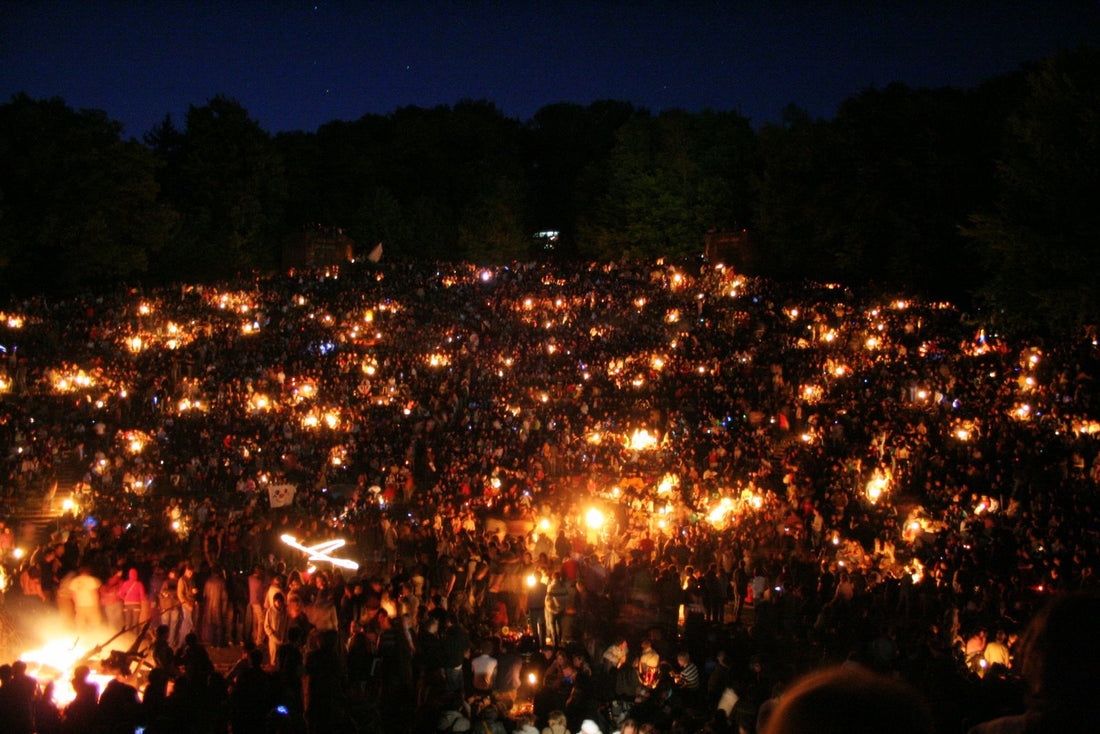


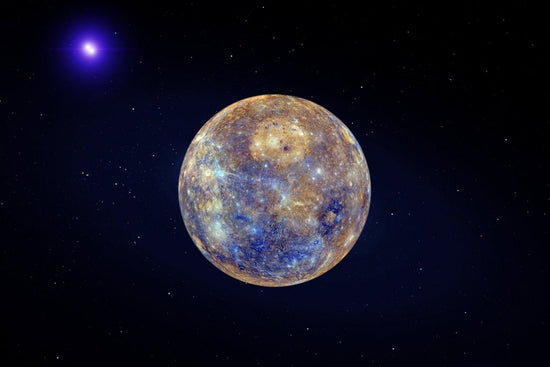
1 comment
Great article! Thank you!!